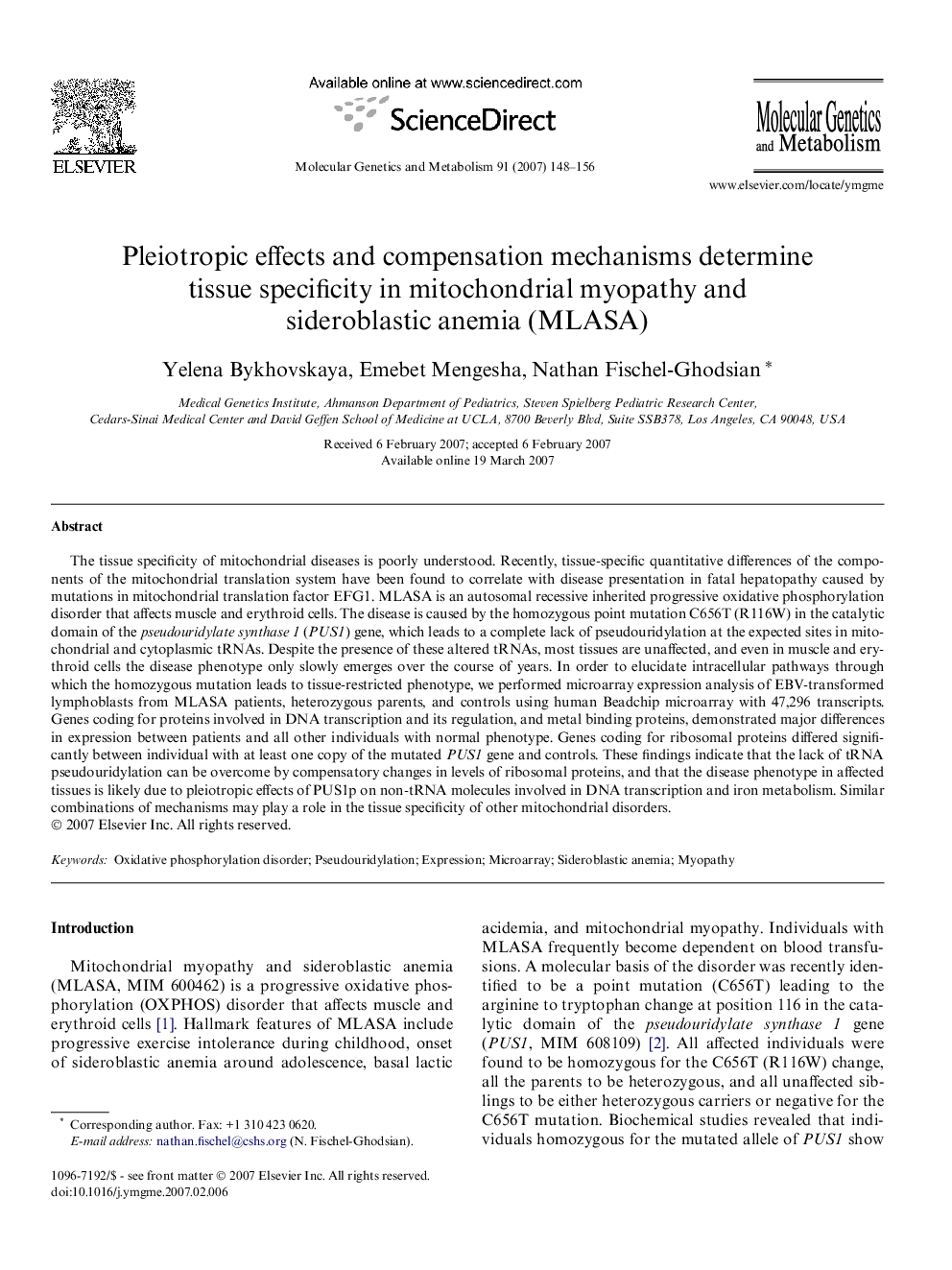| Article ID | Journal | Published Year | Pages | File Type |
|---|---|---|---|---|
| 1999611 | Molecular Genetics and Metabolism | 2007 | 9 Pages |
The tissue specificity of mitochondrial diseases is poorly understood. Recently, tissue-specific quantitative differences of the components of the mitochondrial translation system have been found to correlate with disease presentation in fatal hepatopathy caused by mutations in mitochondrial translation factor EFG1. MLASA is an autosomal recessive inherited progressive oxidative phosphorylation disorder that affects muscle and erythroid cells. The disease is caused by the homozygous point mutation C656T (R116W) in the catalytic domain of the pseudouridylate synthase 1 (PUS1) gene, which leads to a complete lack of pseudouridylation at the expected sites in mitochondrial and cytoplasmic tRNAs. Despite the presence of these altered tRNAs, most tissues are unaffected, and even in muscle and erythroid cells the disease phenotype only slowly emerges over the course of years. In order to elucidate intracellular pathways through which the homozygous mutation leads to tissue-restricted phenotype, we performed microarray expression analysis of EBV-transformed lymphoblasts from MLASA patients, heterozygous parents, and controls using human Beadchip microarray with 47,296 transcripts. Genes coding for proteins involved in DNA transcription and its regulation, and metal binding proteins, demonstrated major differences in expression between patients and all other individuals with normal phenotype. Genes coding for ribosomal proteins differed significantly between individual with at least one copy of the mutated PUS1 gene and controls. These findings indicate that the lack of tRNA pseudouridylation can be overcome by compensatory changes in levels of ribosomal proteins, and that the disease phenotype in affected tissues is likely due to pleiotropic effects of PUS1p on non-tRNA molecules involved in DNA transcription and iron metabolism. Similar combinations of mechanisms may play a role in the tissue specificity of other mitochondrial disorders.
